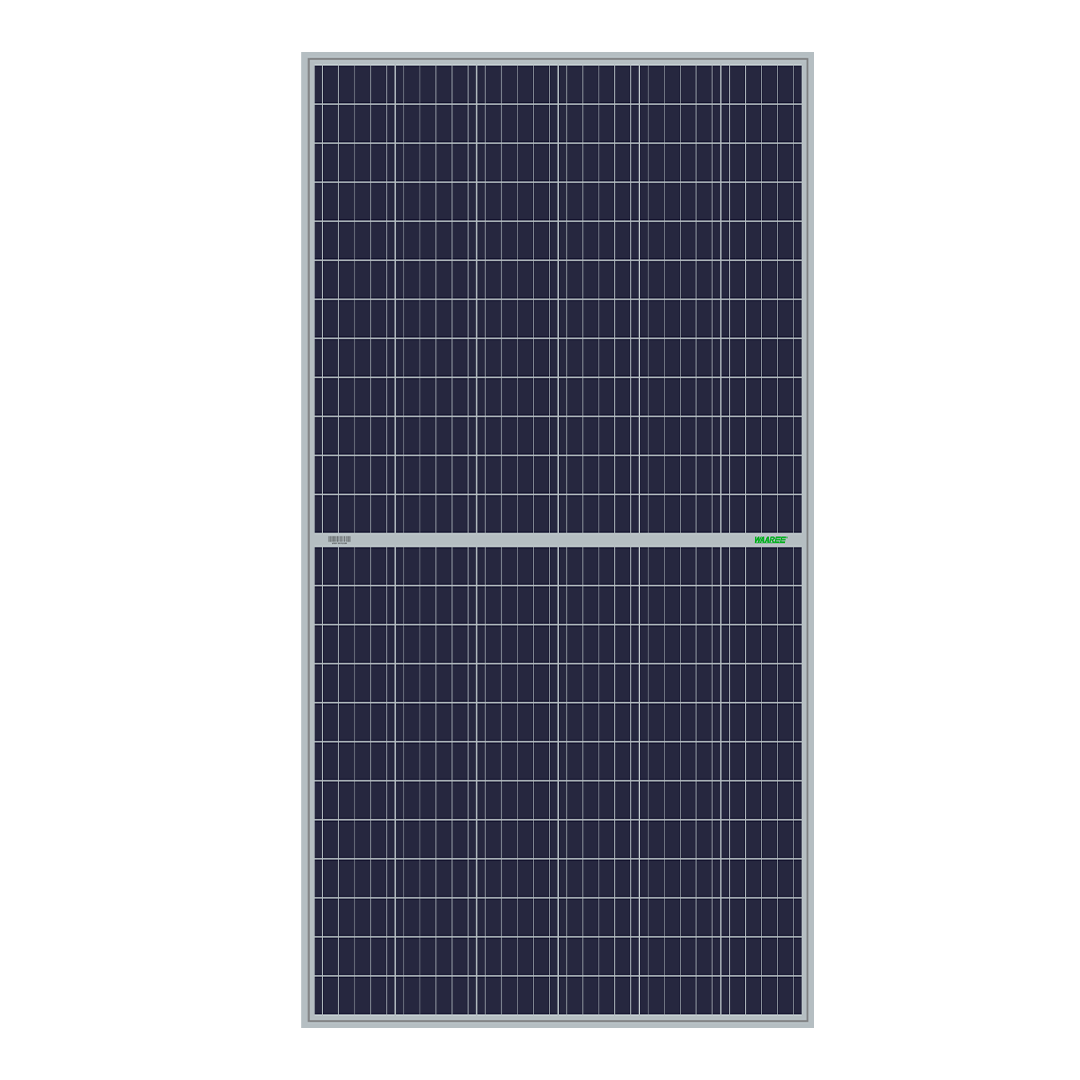Polycrystalline solar panels are solar panels that consist of several crystals of silicon in a single PV cell.
As there are multiple silicon crystals in each cell, polycrystalline panels allow little movement of electrons inside the cells. Polycrystalline solar panels are more eco-friendly than monocrystalline solar panels as they do not require individual shaping and placement of each crystal, these panels also have lower heat tolerance than monocrystalline panels. So, at higher temperatures, these solar panels have lower efficiency than others with high power density.
- Power Range 360-365 Wp (78 cells)
Description
The Poly module you’ve described has several advanced features aimed at improving performance and reliability:
- Better performance under all climatic conditions: This suggests that the module is designed to work efficiently in a wide range of environmental conditions, be it high heat, cold, or varying humidity levels.
- Split junction box improves heat dissipation: A split junction box helps in distributing heat more evenly across the module, leading to less stress on individual components and extending the overall lifespan of the panel.
- PID resistant with long-term reliability: The module is resistant to Potential Induced Degradation (PID), which ensures better longevity and consistent power output over time.
- Superior performance of half cell technology: The use of half-cut cells increases efficiency by reducing electrical losses and increasing power output, even under partially shaded conditions.
- Enhanced power output due to revolutionary design: The design innovations in the module help in maximizing energy production, offering better performance compared to traditional designs.
- Reduced power losses up to 1/4 times: This indicates a significant reduction in power losses, likely through optimized cell arrangement and reduced internal resistance.
- Increased shade tolerance: The module can generate more power even when some parts of it are shaded, which is critical in areas with partial shading issues (e.g., due to nearby buildings or trees).
These features collectively contribute to a more reliable, efficient, and durable solar panel suitable for various applications.


The Polycrystalline Photovoltaic Modules offer several advantages that make them an excellent choice for affordable and efficient sustainable energy:
- Cost-Effective:
Polycrystalline solar panels are generally more affordable due to their simpler manufacturing process, making them a budget-friendly option for solar energy projects without compromising reliability. - Lower Heat Tolerance:
While these panels may have slightly lower heat tolerance compared to other types (such as monocrystalline), they still perform adequately in moderate climates. Their efficiency might drop slightly in extremely high temperatures, but they remain a solid choice for most regions. - Less Silicon Wastage:
The manufacturing process for polycrystalline panels leads to less wastage of silicon compared to monocrystalline panels, contributing to more efficient material use and reducing the environmental impact of production. - Good Efficiency (21%):
With an efficiency rate of around 21%, polycrystalline panels provide a competitive performance in converting sunlight into usable electricity, making them a reliable source of renewable energy.
These advantages position polycrystalline modules as a cost-effective and environmentally-friendly option for those looking to harness solar energy across a variety of climates.






